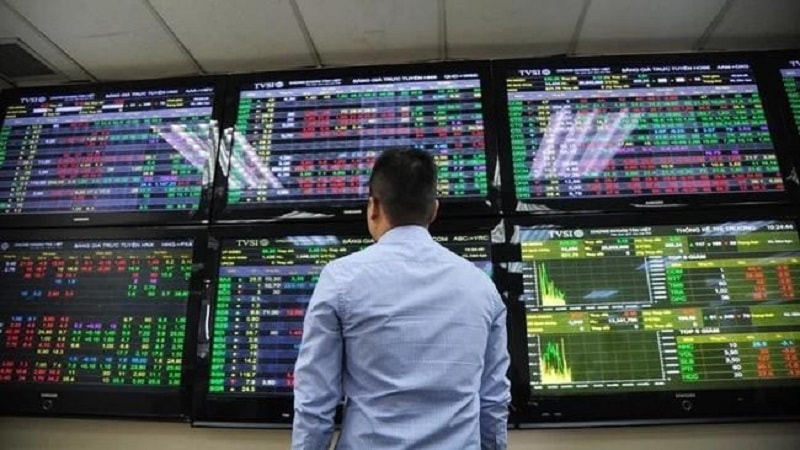Stock market is still vulnerable to profit-taking
Nguyễn Hữu Bình, a stock market expert, believes that as the VN-Index approaches the 1,300-point threshold, the pressure for profit-taking will intensify.

The tariff policies of U.S. President Donald Trump's administration continue to heavily impact global stock markets in general, and the Vietnamese stock market in particular.
Valuations Becoming Relatively Cheaper
Global markets were shaken by the sudden announcement of reciprocal tariffs by the United States on other nations. A widespread sell-off slammed the Vietnamese stock market right after, causing hundreds of equities to drop to their floor levels. In just four straight sessions, the VN-Index fell 18%, a historically unparalleled amount. Fears among investors set off a chain reaction, especially among those who were employing financial leverage, which led to such a dramatic and extensive drop.
However, once the U.S. announced a 90-day tariff postponement, the market rebounded strongly, with three consecutive gaining sessions, narrowing the loss to about 7–8%. Some stocks even surged to new highs, such as GEX, BMP, VIC, and VHM. Nevertheless, in reality, a vast majority of stocks were unable to recover to their previous levels, with most down by 20–30%. Some even continued to hit new lows, indicating further declines despite the rebound. These were mostly in sectors believed to be heavily impacted—such as exports, textiles, industrial zones, and real estate.
This sharp drop in the stock market significantly eroded investor wealth and highlighted the market’s strong divergence. One notable point is the market's liquidity, especially in some specific stocks. Overall liquidity surged, even reaching levels comparable to 2021. Many stocks, like SHB, MBB, and VIX, recorded record-high trading volumes.
Amid these developments, some investors believe the market has found a bottom, valuations have become relatively cheap, and hence expect a rebound. The release of Q1 2025 earnings reports by many companies—some showing positive results—has reinforced this optimism.
The VN-Index increased 13.87 points (1.16%) to 1,211 at the end of trading on April 23, with 416 stocks rising and just 120 falling. 855.2 million units, or VND 18,996.9 billion, were traded in total, a 50% decrease in volume and a 44% decrease in value from the previous day. 68.7 million units, or VND 1,846 billion, were traded through negotiations.
With 131 gainers and just 37 decliners, the HNX-Index increased 3.74 points (1.8%) to 211.45. 66.5 million units, or VND 972.8 billion, were traded, a 47% decrease in volume and a 50% decrease in value from the previous day. 6.6 million units, or VND 61 billion, came from negotiated exchanges.
Unpredictable Risks
However, from another perspective, it’s clear that the tariff and trade negotiation issues with the U.S. have not yet begun in earnest. Thus, there’s no concrete data to clearly assess or define the situation. Looking at other countries like Japan, South Korea, Mexico, and India—despite undergoing multiple rounds of negotiations with the U.S.—no definitive outcomes have emerged, implying significant challenges still lie ahead for Vietnam in trade talks with the U.S.
During the negotiation period, many exporters will be left uncertain about their future strategies. Meanwhile, other businesses will naturally be affected doubly by these external factors, which will likely be reflected in the next financial period.
For investors holding stocks, the “surfing” or short-term trading strategy seems to be the preferred approach. If we closely observe the market since the first sell-off session, trading volumes spiked during sharp drops and gradually tapered during rebounds. Clearly, this liquidity is being fueled by intraday trading as a result of the market's volatility. However, fundamental investors are expected to remain more cautious given the unpredictable risks ahead—especially due to President Trump's volatile stance on tariff policy.
It’s important to note that even in the most favorable conditions, the VN-Index has struggled at the 1,300-point level. Therefore, as the market gets closer to this threshold, the selling pressure is expected to increase significantly.








